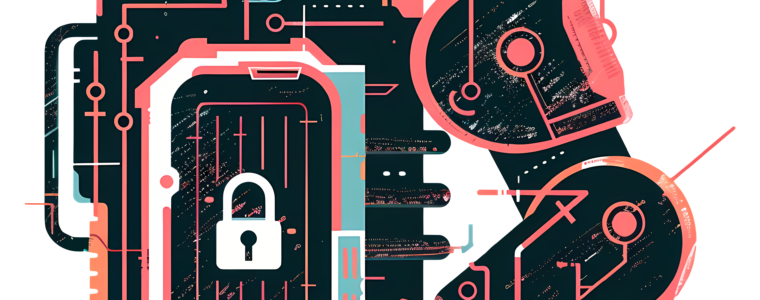
The AI-Powered Defence: How Cybersecurity Companies Counter AI-Enabled Threats
While cybercriminals are finding new ways to weaponize AI, cybersecurity firms are racing to stay ahead, developing AI-driven solutions to detect, prevent, and respond to attacks more effectively than ever before. Companies like Bitdefender, McAfee, and CrowdStrike are investing heavily in AI, using machine learning (ML) and deep learning models to analyze vast amounts of data, recognize patterns, and improve their response to potential threats.

1. Real-Time Threat Detection and Response
One of the primary advantages of AI in cybersecurity is its ability to monitor and analyze massive amounts of data in real time. Traditional security systems often rely on rule-based detection, which can miss novel or complex attacks. In contrast, AI-powered systems can identify unusual patterns and behavior indicative of an attack—such as a sudden increase in network traffic, unauthorized access attempts, or file changes.
AI’s speed in threat detection is essential for effective defense. By identifying and responding to threats in real time, AI can prevent cybercriminals from causing damage or stealing data. This real-time capability is crucial for enterprises, government organizations, and financial institutions where any delay in response could result in significant losses or damage.
2. Predictive Analysis and Proactive Defense
AI isn’t only useful for reacting to threats; it also enables predictive analysis, allowing cybersecurity software to anticipate and prevent attacks before they happen. By analyzing historical attack data, AI can identify patterns and predict the likelihood of future threats. This enables companies to proactively strengthen their defenses, close vulnerabilities, and prepare for potential attacks.
For example, Bitdefender’s AI-driven systems can analyze patterns across networks to predict which vulnerabilities hackers might target next. By preemptively addressing these weaknesses, companies can stay a step ahead of attackers. Predictive analysis also allows organizations to allocate resources more efficiently, focusing on the areas most likely to be targeted.
3. Enhanced Endpoint Protection
Endpoint devices—such as laptops, smartphones, and IoT devices—are among the most common entry points for cyber attacks. AI-powered endpoint protection solutions continuously monitor and analyze the behavior of these devices to detect anomalies or suspicious activity.
Unlike traditional endpoint security, which might only respond to known threats, AI-driven solutions can recognize novel patterns, detecting zero-day exploits that haven’t yet been cataloged. This helps prevent breaches caused by previously unknown vulnerabilities, which are increasingly common as hackers deploy more sophisticated tactics.
4. Network Scanning and Vulnerability Assessment
Just as hackers use AI to scan networks for vulnerabilities, cybersecurity firms use it to defend against these attacks. AI-driven cybersecurity solutions can automatically scan entire networks to identify and address potential security gaps before hackers exploit them. By regularly scanning for weaknesses, companies can prevent attacks that rely on exploiting network flaws.
In addition, AI can be used to assess the potential impact of each vulnerability, helping security teams prioritize their responses. For instance, a minor software update might be less urgent than a vulnerability in a critical system, allowing companies to focus on areas of highest risk.
__________________________________________________________________________________________________________________________
AI and the Future of Cybersecurity: An Arms Race?
As both cybercriminals and cybersecurity firms depend on AI, an “arms race” emerges where each side strives to outpace the other. AI’s dual capabilities—to aid both attack and defense—make this race uniquely challenging. New advances in AI can just as easily benefit malicious actors as they can strengthen defenses, making it critical for cybersecurity firms to remain innovative.
Ethical AI and Responsible Development
As the use of AI in cyber warfare continues to evolve, ethical concerns come into play. Researchers and developers in cybersecurity firms need to consider the potential misuse of their technologies. By focusing on ethical AI and implementing strict guidelines, cybersecurity firms can attempt to ensure that their tools remain a force for good.
Furthermore, governments and international organizations are recognizing the need for regulations surrounding AI use in cybersecurity, aiming to limit the potential for misuse while encouraging innovation. Cybersecurity firms have a responsibility to stay compliant with these evolving regulations while also collaborating with industry partners to share insights and best practices.
The Role of Collaboration and Information Sharing
To keep pace with AI-powered cyber threats, collaboration within the cybersecurity industry is essential. Companies like Bitdefender often share information on new attack methods, malware signatures, and other relevant data with industry partners and government agencies. This exchange of information enables companies to quickly update their defenses and counter emerging threats, creating a united front against cybercriminals.
Additionally, AI-driven cybersecurity tools can benefit from continuous learning, where each new threat helps improve detection algorithms. By sharing data, companies contribute to an evolving knowledge base, making it harder for hackers to outsmart AI-driven defenses.
__________________________________________________________________________________________________________________________
Conclusion: AI as a Catalyst for a Safer Digital World?
Artificial intelligence is both a powerful weapon and an essential shield in today’s cybersecurity landscape. While cybercriminals use AI to develop more sophisticated attacks, companies like Bitdefender are deploying AI solutions to detect, prevent, and respond to these threats with remarkable agility and accuracy. This duality—the capability of AI to both endanger and protect—highlights the importance of responsible development, collaboration, and ethical standards in AI’s advancement.
Ultimately, the future of cybersecurity will likely be shaped by how well defenders can leverage AI to stay one step ahead of attackers. While AI’s role in cyber threats poses undeniable challenges, it also holds the potential to usher in a safer digital world where real-time, predictive defenses can keep even the most advanced attacks at bay. With AI continuing to evolve, the arms race in cybersecurity will undoubtedly intensify, but the hope is that AI’s promise will outweigh its perils, making the digital realm more secure for everyone.
